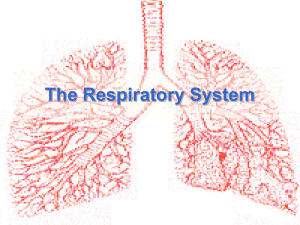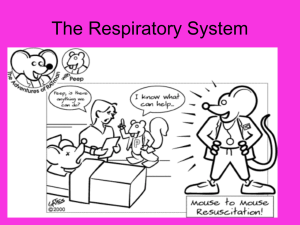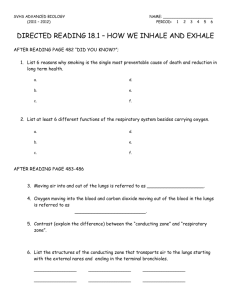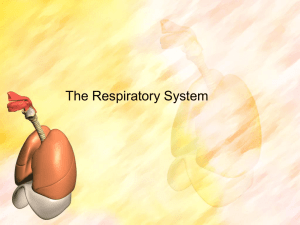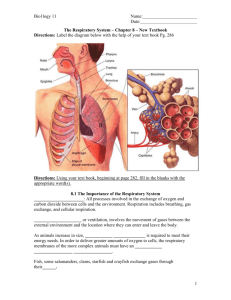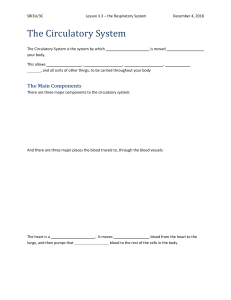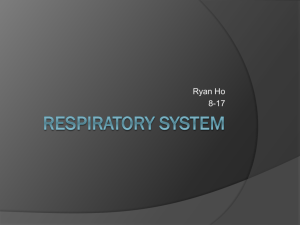CircRespReview Answers
advertisement
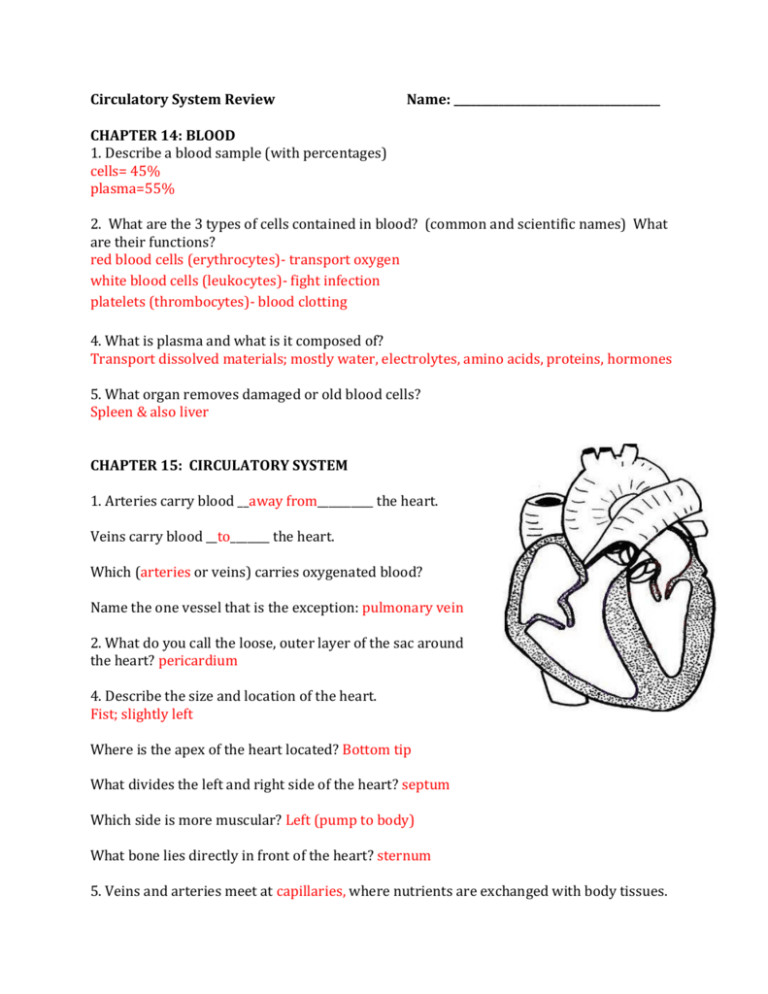
Circulatory System Review Name: _____________________________________ CHAPTER 14: BLOOD 1. Describe a blood sample (with percentages) cells= 45% plasma=55% 2. What are the 3 types of cells contained in blood? (common and scientific names) What are their functions? red blood cells (erythrocytes)- transport oxygen white blood cells (leukocytes)- fight infection platelets (thrombocytes)- blood clotting 4. What is plasma and what is it composed of? Transport dissolved materials; mostly water, electrolytes, amino acids, proteins, hormones 5. What organ removes damaged or old blood cells? Spleen & also liver CHAPTER 15: CIRCULATORY SYSTEM 1. Arteries carry blood __away from__________ the heart. Veins carry blood __to_______ the heart. Which (arteries or veins) carries oxygenated blood? Name the one vessel that is the exception: pulmonary vein 2. What do you call the loose, outer layer of the sac around the heart? pericardium 4. Describe the size and location of the heart. Fist; slightly left Where is the apex of the heart located? Bottom tip What divides the left and right side of the heart? septum Which side is more muscular? Left (pump to body) What bone lies directly in front of the heart? sternum 5. Veins and arteries meet at capillaries, where nutrients are exchanged with body tissues. 6. Describe the function of the sinoatrial node and trace the path of a nerve (cardiac) impulse through the cardiac conduction system. What is the pacemaker? Regulates heart beat 7. What are systolic pressure and diastolic pressure? What is the “normal” blood pressure for a human? Systolic is read the heart beats; diastolic is when it relaxes; 120/80 10. What two piece of equipment are needed to take a person’s blood pressure? Describe the procedure: 11. Blood that moves from the heart to the lungs and back to the heart again is in the pulmonary circuit. Blood moving throughout the body is in the systemic circuit. 12. What is the main vessel the sends deoxygenated blood from the heart to the lungs? Pulmonary artery 12. Label all of the major vessels that attach to the heart. 13. Label a diagram of the heart and trace the flow of blood through the heart. Ch 19: RESPIRATORY SYSTEM REVIEW 1. What are the main functions of the respiratory system? Gas exchange, producing sound, smelling, regulating pH 2. Name the organs of the upper respiratory tract? Nose, nasal cavity, sinuses, pharynx lower respiratory tract? Larynx, trachea, bronchi, lungs 3. In what body cavity are the lungs located? Thoracic 4. The taking in of air is called inhalation; breathing out= exhalation 5. The area located behind the oral cavity and between the nasal cavity and above the larynx is the pharynx 6. Where does the trachea lie in relation to the esophagus? Ventral (front) 7. What is the function of the hyaline cartilage of the trachea? Keep the trachea from collapsing 9. What is the function of the nasal conchae? Surface area 10. What is the triangular slit that opens and closes during talking called? glottis 12. What structure resembles a bunch of grapes? alveoli 13. What is the function of the mucus membrane that lines the nasal cavities? Warms and moistens air, traps dust 14. What happens when the diaphragm is lowered? inhalation 15. What part of the respiratory center is responsible for maintaining breathing patterns? pons 16. Oxygen travels from the pharynx to the larynx to the trachea and finally to the lungs where oxygen is exchanged with the bloodstream. 19. What structure prevents food from entering the airway during swallowing? epiglottis 20. What fluid lubricates the lungs? surfactant 23. How does oxygen enter blood capillaries? diffusion 24. Describe how a particular disorder affects the circulatory and respiratory systems.


